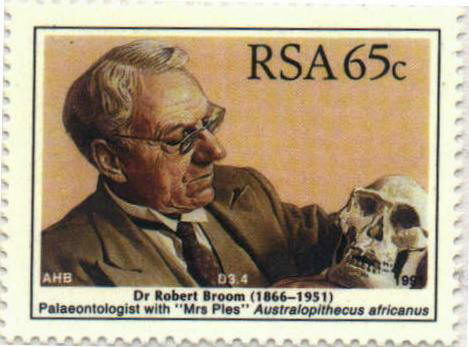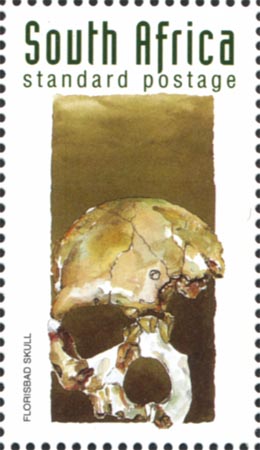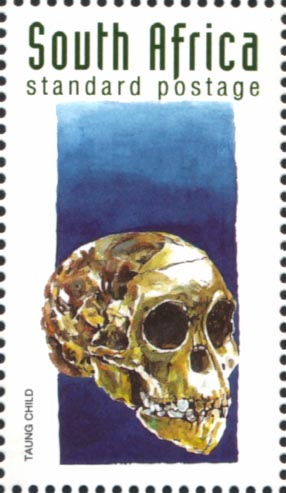Australopithecus africanus
Australopithecus africanus (Dart, 1925)
Australopithecus
robustus (Broom, 1938)
The Transvaal region of South Africa was the home to the species Australopithecus africanus, which lived 3.3 to 2.5 million years ago. This species was the first of the australopiths to be described; Raymond Dart named the genus and species in 1925 after his discovery of the famous Taung child.
Many features of the cranium of A. africanus are more evolved than that of earlier A. afarensis. These features include a more globular cranium and slightly higher ratio of brain size to body size. Also the teeth and face appear less primitive. For years researchers considered the evolution of early humans to pass from A. afarensis to A. africanus and lead to early Homo.
However, some researchers now believe that facial features link A. africanus to the "robust" early human species of southern Africa, Paranthropus robustus. Known as anterior pillars, which are located on either side of the nose, these features are found in A. africanus and P. robustus, and not in the eastern African species. This implies that the designation of the genus Paranthropus may be incorrect.
Austalopithecus africanus was first discovered by Raymond Dart in 1925. He found a beautifully preserved skull of a juvenile, three to four years old. This skull, commonly known as the Taung Child, for Taung South Africa where it was found, is perhaps the best preserved fossil of A. africanus known.
Astralopithecus africanus has a somewhat dish shaped facial structure with teeth that are relatively large compared to modern humans. While it has larger front teeth compared to the back the emphasis is on back tooth grinding. As a result, a sagital crest is present on males for the attachment of large muscles.
This creature is rather lightly built and has a small cranial capacity of about 440 cc on the average. It first appeared approximately 2.5 million years ago and had a rather short 1 million year existence. Many anthropologists believe that A. africanus belongs on the line that leads to Homo.
Others say that it belongs on the defunct Australopithecine line. Perhaps the most compelling evidence I have viewed is the dental traits chart on page 277 of Donald Johanson's book "Lucy: The Beginnings of Human Kind." It clearly shows that while the molars of Homo remain small like Australopithecus afarensis, the Australopithecine molars get larger and larger with each species beginning with A. africanus. I invite you to go look this up and decide for yourself where this species belongs on the hominid family tree.
Palau
Australopithecus africanus
Year 1999
South Africa
Australopithecus africanus
Year 1998
Australopithecus robustus
Year 2006




